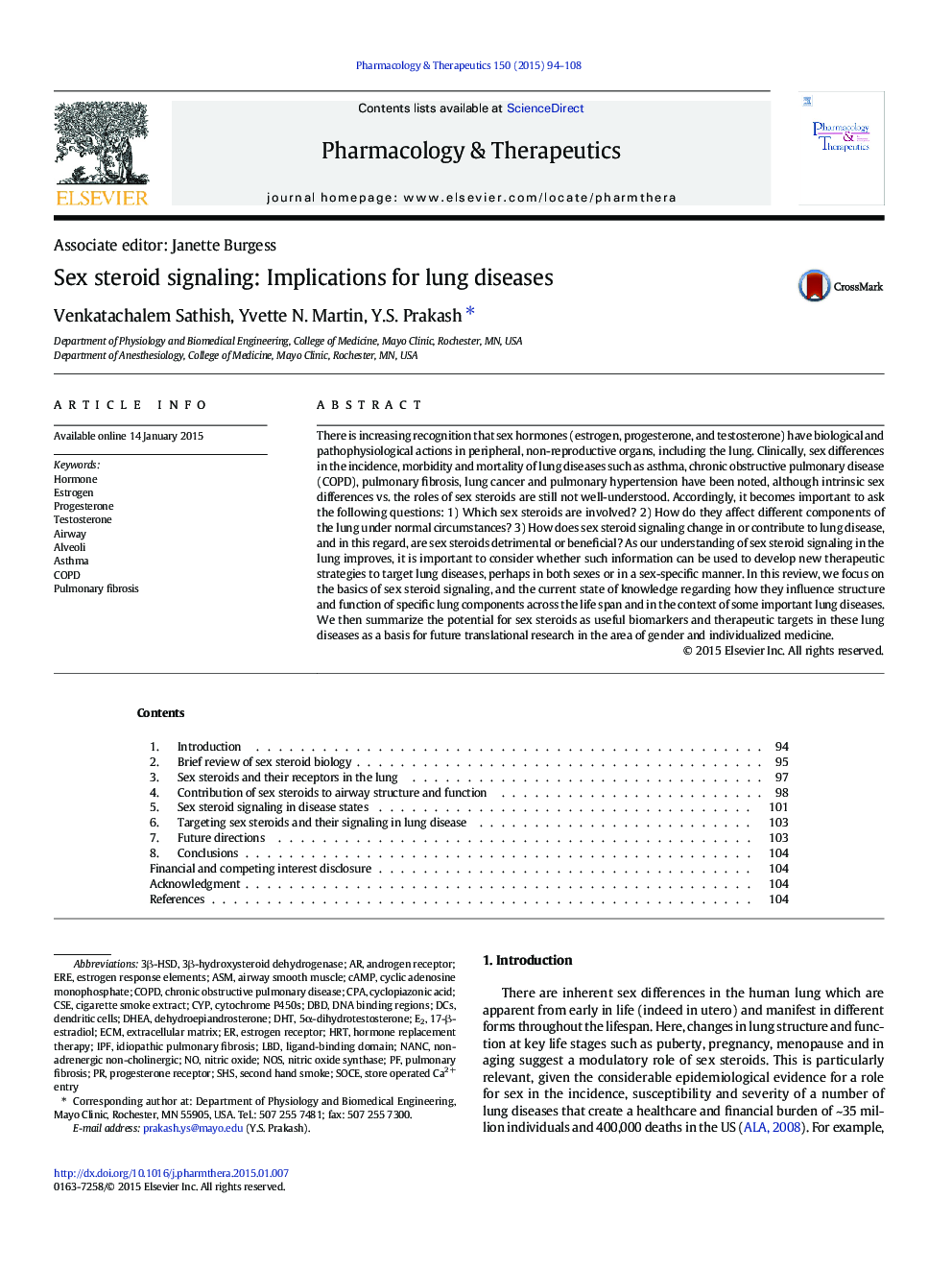| Article ID | Journal | Published Year | Pages | File Type |
|---|---|---|---|---|
| 2563093 | Pharmacology & Therapeutics | 2015 | 15 Pages |
There is increasing recognition that sex hormones (estrogen, progesterone, and testosterone) have biological and pathophysiological actions in peripheral, non-reproductive organs, including the lung. Clinically, sex differences in the incidence, morbidity and mortality of lung diseases such as asthma, chronic obstructive pulmonary disease (COPD), pulmonary fibrosis, lung cancer and pulmonary hypertension have been noted, although intrinsic sex differences vs. the roles of sex steroids are still not well-understood. Accordingly, it becomes important to ask the following questions: 1) Which sex steroids are involved? 2) How do they affect different components of the lung under normal circumstances? 3) How does sex steroid signaling change in or contribute to lung disease, and in this regard, are sex steroids detrimental or beneficial? As our understanding of sex steroid signaling in the lung improves, it is important to consider whether such information can be used to develop new therapeutic strategies to target lung diseases, perhaps in both sexes or in a sex-specific manner. In this review, we focus on the basics of sex steroid signaling, and the current state of knowledge regarding how they influence structure and function of specific lung components across the life span and in the context of some important lung diseases. We then summarize the potential for sex steroids as useful biomarkers and therapeutic targets in these lung diseases as a basis for future translational research in the area of gender and individualized medicine.
